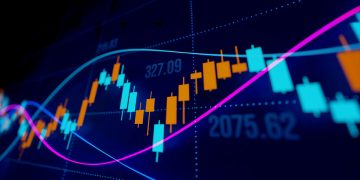As the Federal Reserve enters the latter stages of its most aggressive tightening cycle in decades, global investors are starting to question the relative appeal of U.S. equities. While American markets have long been the default destination for global capital, the combination of elevated interest rates, quantitative tightening (QT), and slowing corporate earnings has many asking if a rotation is finally on the horizon. Could we be on the cusp of a meaningful reallocation toward emerging markets (EM) and European equities? Or will the resilience of U.S. tech and consumer sectors once again defy expectations?
The answers lie at the intersection of monetary policy, global asset allocation flows, and sectoral shifts driven by macroeconomic fundamentals. While the Fed’s pause or pivot is not a certainty in 2025, its recent decisions are undeniably creating ripple effects in capital markets that stretch far beyond U.S. borders. Investors need to understand not only what the Fed is doing—but how the rest of the world is adjusting in response.
Timeline of Fed Hikes and QT Impact
Since early 2022, the Federal Reserve has lifted its benchmark rate by over 500 basis points in a bid to rein in inflation. In addition to raising rates, the Fed has engaged in QT by steadily reducing its balance sheet—essentially draining liquidity from the financial system. These moves have pushed up yields on U.S. Treasury securities, increased borrowing costs for corporations and households, and reshaped investor behavior.
The tightening has hit interest-rate sensitive sectors like real estate and small-cap growth stocks particularly hard. Meanwhile, mega-cap tech stocks initially shrugged off the pressure, but even they have shown signs of fatigue in the face of slowing earnings growth and higher discount rates. With inflation proving stickier than expected, the Fed has held off on significant rate cuts, making it clear that it is in no rush to re-stimulate the economy.
QT, in particular, has been underappreciated in its impact. As the Fed lets Treasuries and mortgage-backed securities roll off its balance sheet, bank reserves shrink and liquidity tightens across the board. This liquidity squeeze not only puts pressure on credit markets but also reduces the “excess capital” that often finds its way into equity allocations. The result is a more fragile U.S. stock market environment—one that is more vulnerable to earnings disappointments, geopolitical shocks, or further rate surprises.
Global Investor Reallocation to EM and EU
Against this backdrop, international markets are starting to look more attractive. Valuations in Europe and emerging markets remain significantly lower than in the U.S., and central banks in many of these regions are already in easing mode. This policy divergence is creating the conditions for capital rotation. For instance, countries like Brazil, Chile, and Hungary have begun cutting rates, and China is implementing various fiscal and monetary measures to support its economy. Europe, facing recessionary risks, is seeing dovish signals from the ECB that could bolster risk assets in the region.

According to recent fund flow data, capital is indeed shifting. EM equity ETFs have seen inflows after years of neglect, while U.S. equity ETFs are beginning to flatten or even reverse in net flows. Sovereign wealth funds, pension funds, and large institutions are exploring reallocation strategies that reduce exposure to the U.S. and diversify into undervalued or structurally improving markets abroad.
Currency dynamics are also playing a role. As the dollar peaks or begins to weaken, EM assets become more attractive both from a valuation and currency appreciation standpoint. The dollar’s strength in 2022 and 2023 was a headwind for many global markets, but if the Fed’s tightening cycle is truly near its end, the dollar could enter a more prolonged downward phase—fueling renewed interest in global equity plays.
Sectors Likely to Benefit Abroad
In Europe, sectors such as industrials, luxury goods, and energy are well positioned to benefit from a shift in investor focus. Many European firms are capitalizing on the green transition, digital transformation, and re-industrialization trends—areas that are increasingly drawing investor capital. German manufacturers, French luxury brands, and Nordic clean tech companies are among the top beneficiaries of both cyclical recovery and thematic tailwinds.
In emerging markets, the focus is on consumer-driven growth, digital finance, and commodity exports. India, for instance, is seeing strong foreign direct investment (FDI) in tech and manufacturing, with domestic consumption acting as a stabilizing force. Latin America, particularly Brazil and Mexico, offers opportunities in agriculture, materials, and infrastructure—sectors that tend to benefit from a weaker dollar and rising commodity demand.
Chinese equities remain volatile due to regulatory overhang and property sector concerns, but selective opportunities are emerging in AI, automation, and green energy as Beijing tries to reboot growth. Southeast Asia is also on the radar for global investors looking to benefit from supply chain diversification and demographic momentum.
Overall, this sectoral differentiation means investors rotating out of U.S. equities are not simply chasing geographical diversification—they are targeting specific growth stories and macro setups that differ markedly from the U.S. narrative.
Risks of Decoupling Narratives
Still, the notion of a clean rotation away from U.S. equities comes with risks. The U.S. economy remains among the most dynamic in the world, and its corporate sector has unparalleled access to capital and innovation ecosystems. While high valuations are a concern, especially in tech, the U.S. remains a hub for AI, biotech, and digital infrastructure—areas that are expected to drive future global growth. Any sharp rotation away from these themes could prove premature if innovation continues to deliver outsized returns.
Moreover, geopolitical tensions, such as the Ukraine conflict, instability in the Middle East, or trade frictions involving China, could reinforce the safe-haven appeal of U.S. assets. During periods of global uncertainty, investors often retreat to the relative stability and liquidity of U.S. Treasuries and equities—especially when volatility spikes.
There is also the danger of assuming that international central banks can engineer soft landings more effectively than the Fed. Europe’s structural challenges, including energy dependence and aging demographics, remain unresolved. Many emerging markets, despite their growth potential, face political instability, underdeveloped institutions, and limited fiscal capacity. Overexposure to these markets without appropriate risk controls could backfire.
The concept of decoupling—that foreign markets will thrive while U.S. markets lag—has historically been inconsistent. Global equity markets tend to correlate strongly, especially during periods of stress. Therefore, a synchronized equity rally or correction remains a plausible scenario, even if relative performance varies across regions.
Conclusion
The Federal Reserve’s recent decisions are prompting a global re-evaluation of equity allocations. With high rates and QT continuing to suppress U.S. liquidity, and other regions flashing green lights for recovery or stimulus, investors are taking a harder look at international opportunities. A gradual rotation into EM and European equities is underway, supported by valuation gaps, monetary divergence, and structural reform stories.
But this rotation is not without caveats. U.S. markets continue to offer unmatched depth, innovation, and defensive qualities. A complete exit from U.S. exposure is not advised—but rebalancing with a global lens could be prudent. Investors should seek to combine U.S. strengths with undervalued international assets, while monitoring macro developments and currency trends closely.
Ultimately, the shift isn’t about abandoning U.S. equities, but rethinking portfolio construction in a multipolar world where policy, growth, and innovation no longer flow from a single dominant source. The rotation is less a sprint and more a strategic drift—one that requires patience, data-driven insight, and global diversification discipline.


































